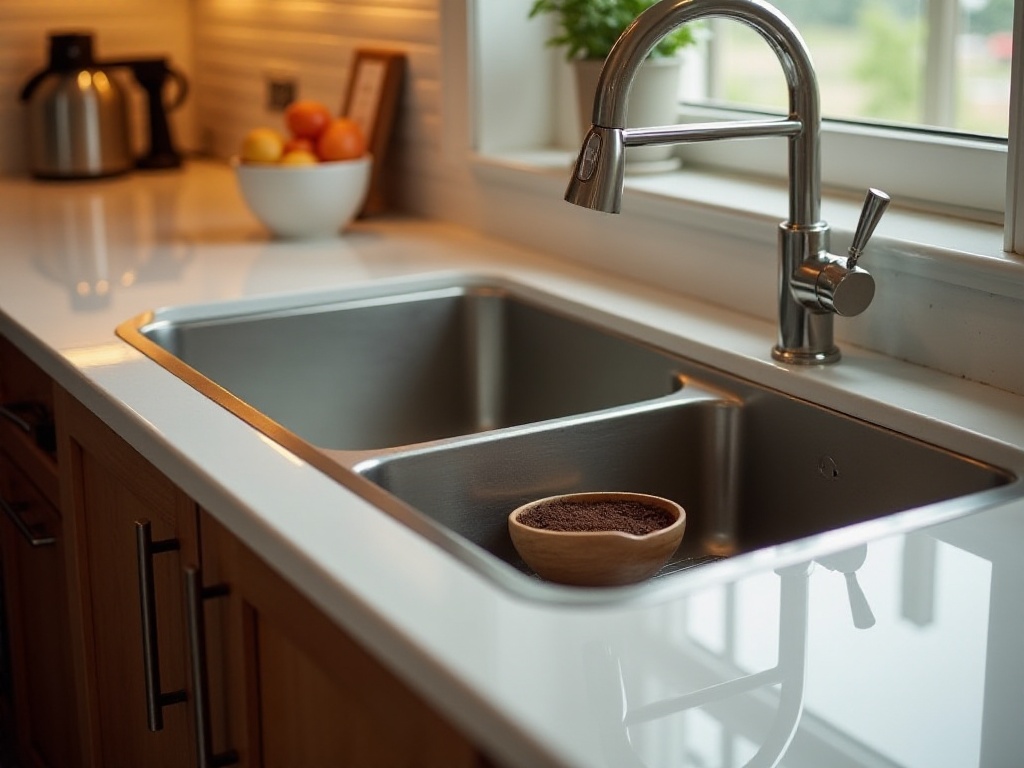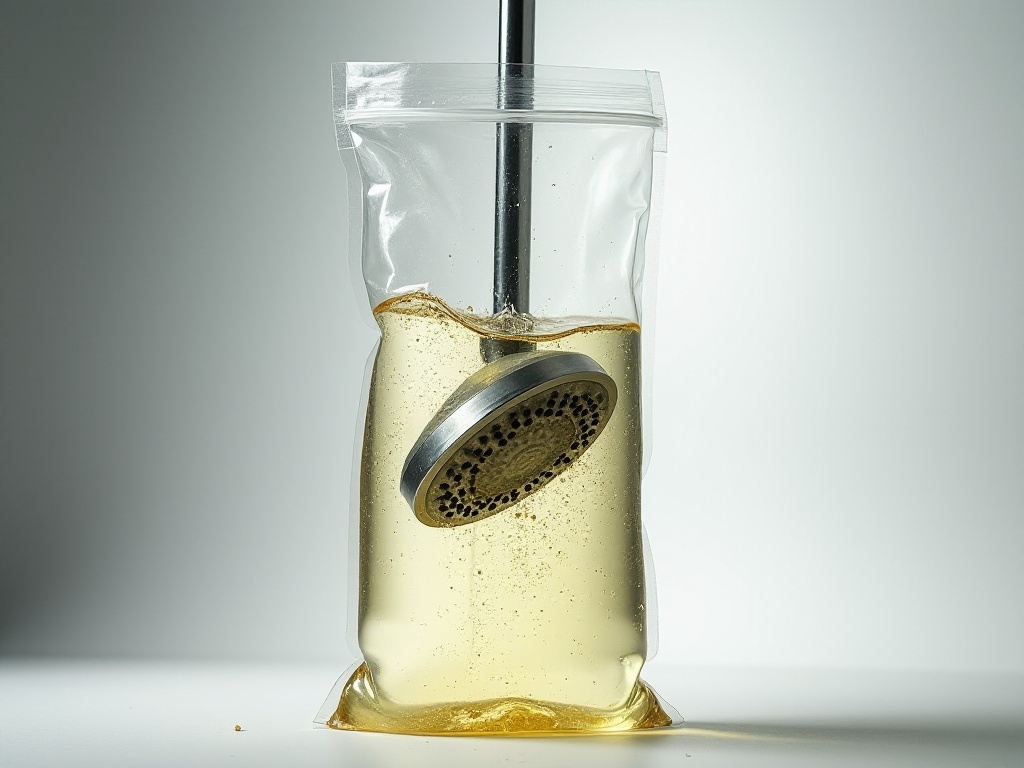Opening Thoughts
Do you often find cleaning to be particularly troublesome? I totally understand that feeling! The other day while tidying my room, I wondered why some people can keep their homes spotless while I always feel overwhelmed. Sometimes when I see friends posting pictures of their perfectly clean rooms on social media, I feel envious, but I just can't seem to find the motivation to clean.
After some exploration and experimentation, I discovered that the key isn't how much time you spend, but whether you've mastered the right methods. Often we feel tired because we're using the wrong approach, putting in a lot of effort with minimal results. Today I'll share some super practical cleaning tips that will guarantee to make your home look like new. These are all methods I've personally tested, and they really work!
Kitchen Section
To be honest, the kitchen is one of the most difficult areas to maintain. After cooking, the grease on the range hood, oil spots on the stove, and greasy sink all give me headaches. Especially when stir-frying, oil splatters everywhere, making a mess all over. And those food residues, if not dealt with promptly, can easily start to smell.
But once you master the tricks, these aren't problems anymore. I went from being a kitchen cleaning novice to becoming a cleaning expert. The best part is these methods are all super simple and don't require expensive cleaning products - you can use things you already have at home.
Microwave Cleaning
Still troubled by stubborn stains in your microwave? Those oil splatters from heating food seem impossible to clean, and you're afraid of damaging the microwave by scrubbing too hard. Try this method: prepare a large bowl with water and a few lemon slices, microwave for 3-5 minutes. After letting the steam circulate inside the microwave, the stains will soften and can be easily wiped clean with a cloth.
I was amazed the first time I tried this method - the oil stains that used to be so difficult suddenly became easy to clean. Plus, you don't need any chemical cleaners, so there's no worry about residues. The lemon fragrance fills the entire kitchen with freshness - isn't this natural deodorizing method so much better than chemical cleaners?
If you don't have fresh lemons, don't worry - white vinegar works similarly. Just add two spoonfuls of white vinegar to the water and microwave for 3-5 minutes. While it might not smell as nice as lemon, it cleans just as well.
Oh, and after cleaning the microwave interior, don't forget the turntable and turntable support. These parts are where bacteria most easily grow, so it's recommended to remove and rinse them with water weekly. If there's grease, add some dish soap and gently scrub.
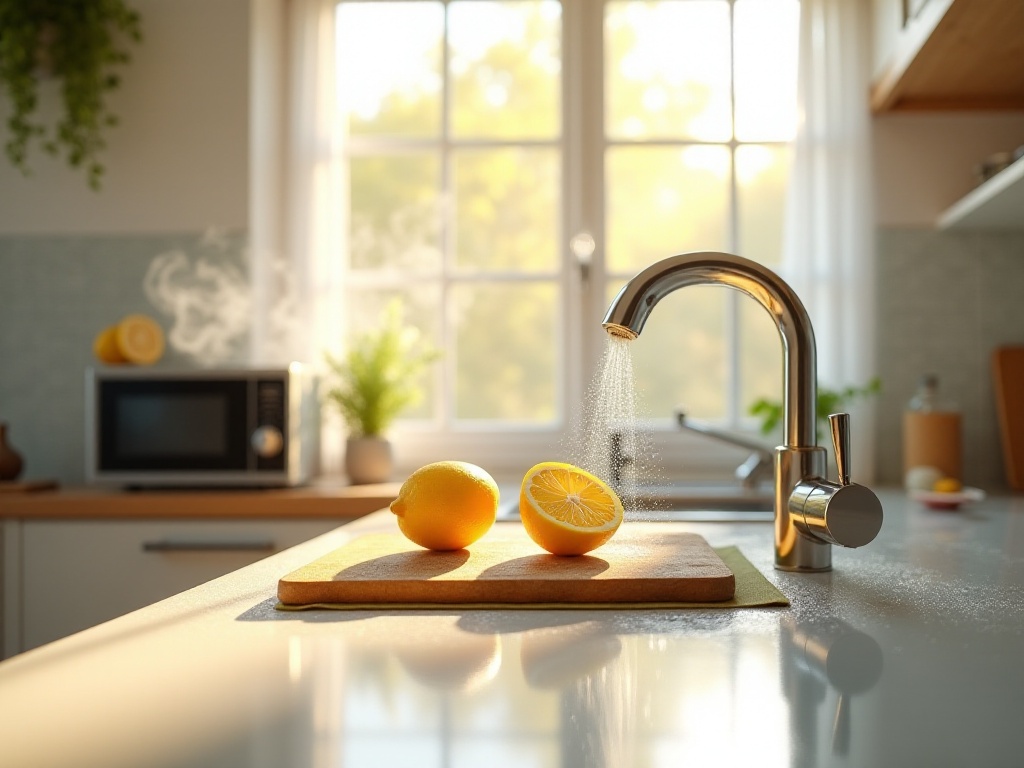
Refrigerator Maintenance Secrets
When it comes to cleaning kitchen appliances, many people overlook daily refrigerator maintenance. Actually, not only should you pay attention to internal cleanliness, but external maintenance is also important. Did you know olive oil can be used to clean stainless steel appliance surfaces? Yes, the same one we use for cooking. Just put a few drops of olive oil on a soft cloth and gently wipe the refrigerator surface - it not only removes fingerprints and stains but also gives the refrigerator surface a soft shine.
This method keeps my refrigerator looking good for a long time. Most importantly, it doesn't damage the refrigerator surface at all - it's both eco-friendly and economical. However, remember to use a soft cloth, preferably a microfiber cloth, to avoid scratching the surface.
Besides external maintenance, internal cleaning is also crucial. I suggest taking some time each week to check the food in your refrigerator. Remove expired or spoiled food promptly, and wipe the interior walls with warm water. This not only keeps the refrigerator clean but also prevents odors.
Special reminder: the door seal often collects dirt, so it's recommended to gently brush it with warm water using a toothbrush. If you notice the seal is loose or damaged, replace it promptly, otherwise it will affect the refrigerator's cooling efficiency and increase electricity costs.
Deep Cleaning the Range Hood
When talking about kitchen cleaning, we can't ignore the "big challenge" of the range hood. Many people find cleaning the range hood particularly troublesome, and indeed, if you don't maintain it regularly, thick grease can easily accumulate.
My experience is that rather than waiting until the range hood gets very dirty for a big clean, it's better to develop a habit of frequent simple cleaning. After each cooking session, wipe the range hood surface with kitchen paper to remove oil stains, preventing grease buildup. As for the filter screen, it's recommended to remove and clean it weekly.
Here's a tip for cleaning the filter screen: first soak it in hot water for 15 minutes, then add some dish soap and gently scrub with a soft brush. If the grease is particularly stubborn, you can add baking soda to the hot water, which makes the grease easier to break down. After washing, make sure to rinse thoroughly and let it dry completely before reinstalling.
For deep cleaning the range hood, it's recommended to do it every three months. Choose a sunny weekend to completely disassemble and clean the range hood. Remember to clean the motor housing and fan wheel, as these areas easily accumulate grease too. Pay special attention to safety while cleaning, preferably wear rubber gloves to avoid cuts from parts.
Daily Kitchen Counter Maintenance
The kitchen counter is one of the most frequently used areas and also one of the easiest places to hide dirt and grime. Especially oil splatters while cooking - if not dealt with promptly, they can easily become stubborn stains.
My suggestion is: try to use cutting boards while cooking, avoid cutting directly on the counter. If you accidentally dirty the counter, wipe it immediately with kitchen paper. When tidying up the kitchen each day, wipe down the counter with warm water and dish soap - this not only keeps it clean but also prevents bacteria growth.
For marble countertops, be especially careful not to use acidic cleaners as they can damage the stone surface. It's best to use specialized stone cleaners, or simply wipe with warm water. Also, it's recommended to wax marble countertops every six months to form a protective layer that prevents stains from penetrating.
Living Room Strategy
The living room is the face of your home and where we spend most of our time. A clean and comfortable living room can improve mood and increase work and study efficiency. However, because it's used so frequently, it can easily become messy. Families with children or pets especially need some special cleaning techniques.
Fabric Furniture Care
Pet owners must have been troubled by fur on sofas. Seeing cat and dog hair floating around on the sofa every day can be really frustrating. Here's a particularly clever method: put on disposable rubber gloves, slightly dampen them, then gently run your hands over the sofa surface. Amazingly, pet hair will automatically stick to the gloves.
The first time I used this method, I was truly shocked. Pet hair that used to take forever to clean with a vacuum could now be dealt with in minutes. This method not only saves time and effort but is also particularly environmentally friendly. Plus, it won't damage fabric surfaces like some cleaning tools might.
Besides dealing with pet hair, daily maintenance of fabric sofas is also important. It's recommended to thoroughly vacuum weekly, paying special attention to dust in sofa crevices. If there are stains, you can use professional fabric cleaners, but always test in an inconspicuous area first to ensure it won't cause discoloration.
For frequently used cushions and pillows, regular washing is recommended. If they're removable, simply take off the covers and machine wash them. If they can't be removed, you can use a steam cleaner - steam not only removes stains but also disinfects.
Floor Maintenance
Many people find mopping very tiring, but actually, if you master the correct method, efficiency can improve greatly. My suggestion is: start mopping from the innermost part of the room, moving toward the door. This way you won't "mop yourself into a corner" or leave footprints on already cleaned areas.
Before mopping, make sure to clean the dust off the floor first. You can use a broom or vacuum cleaner. This prevents spreading dust around while mopping. When mopping, use an appropriate amount of water - too much water can not only leave water marks but might also damage the floor.
For wooden floors, be especially careful not to use too much water. It's best to use a semi-dry mop, which can clean while protecting the floor. If you notice scratches on the floor, you can gently rub them with walnuts - the walnut oil will fill in the scratches, making the floor look like new.
There's also an interesting invention called "mopping slippers" - cleaning cloths attached to the bottom of slippers. Clean while walking, double the efficiency. Although it sounds funny, it actually works really well. Especially suitable for families that need frequent light cleaning.
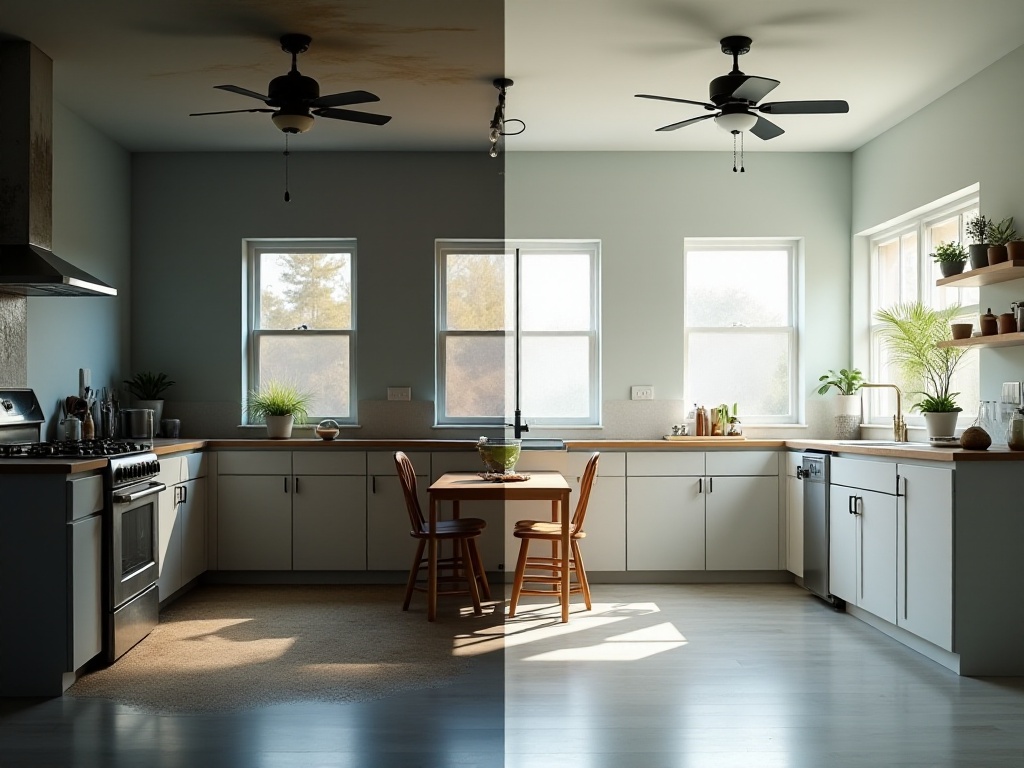
Glass Cleaning Techniques
Living room windows and mirrors easily collect fingerprints and stains. The traditional method is to spray glass cleaner and wipe, but there's actually a simpler way. Mix white vinegar and warm water in a 1:1 ratio, put it in a spray bottle, spray on the glass surface and wipe with newspaper - the results are excellent.
Using newspaper to clean glass might sound strange, but actually newspaper fibers won't leave lint, and certain components in the ink can make glass especially bright. However, note that it's best to clean glass on cloudy days or in the evening - direct sunlight will make the cleaning solution dry too quickly, easily leaving water marks.
Special Areas
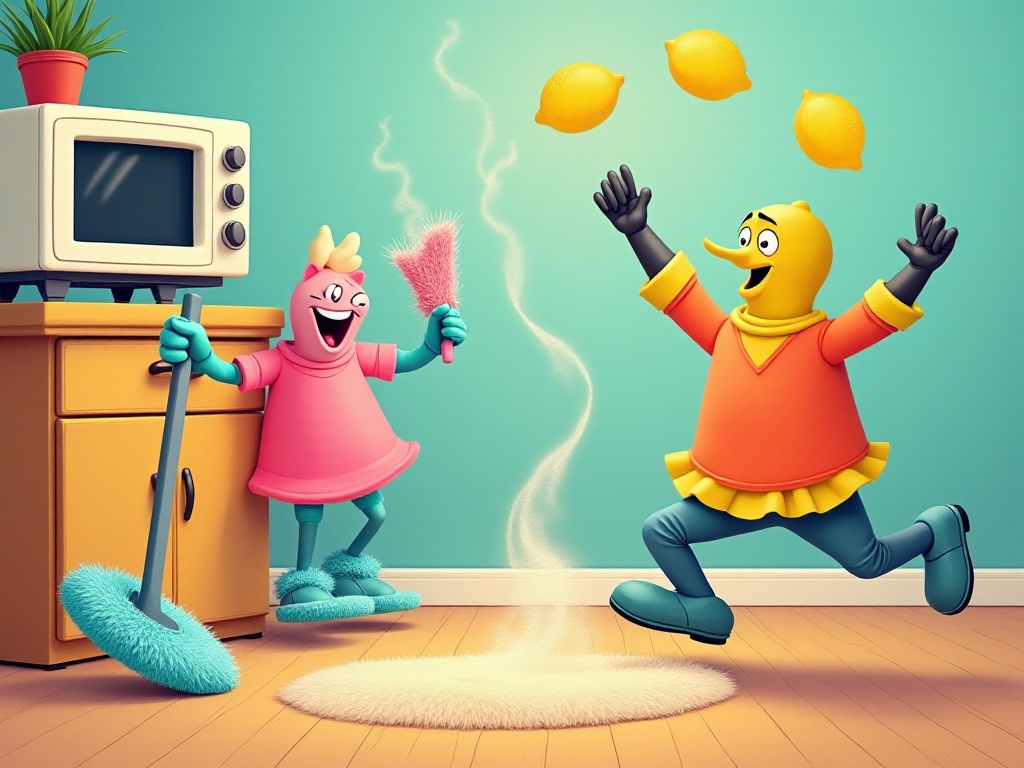
Wall Cleaning Tips
Families with young children must have experienced this: coming home one day to find several pieces of "artistic creation" on the walls. Don't panic - set a hair dryer to hot air, blow on the crayon marks for a few seconds, and once the crayon softens, gently wipe with tissue paper. I've used this method several times, and it perfectly solves the problem every time.
As for wall stains, they can be dealt with by gently rubbing with a tennis ball. The tennis ball's fuzzy texture is particularly suitable for removing wall stains without damaging the wall. For water-based pen marks, you can gently rub with toothpaste - the mild abrasive action of toothpaste can remove wall stains.
For white walls, if there are stubborn stains that can't be removed, consider using masking tape to isolate the stained area, then touch up with the same color wall paint. This solves the stain problem without affecting the overall appearance of the wall.
Bathroom Cleaning
The bathroom might be the area that needs the most thorough cleaning. First is toilet cleaning - besides regular cleaners, you can also use cola. Pour cola into the toilet, let it sit for 30 minutes - the acidic substances in cola can effectively remove limescale.
For shower glass doors, the most annoying problem is limescale. You can rub directly with lemon slices dipped in salt - the natural acidity of lemon plus the abrasive action of salt can easily remove limescale. After cleaning, rinse with clean water and dry with a towel.
If shower heads have uneven water flow, they're probably blocked by limescale. You can soak the shower head in white vinegar for a few hours, and the limescale will automatically fall off. If conditions allow, it's recommended to do such deep cleaning every three months.
Balcony Organization
The balcony serves as both a drying area and storage space for many families. To keep the balcony tidy, first plan your storage well. You can install wall shelves to store items that aren't frequently used.
Clothes racks should be wiped regularly, especially after rain, to prevent rust. Standing water should be dealt with promptly - you can lay non-slip mats on the floor, which both prevent slipping and standing water.
If you have plants on the balcony, remember to regularly clean fallen leaves and dead branches. When watering plants, control the amount of water to avoid overflow from pots causing floor puddles.
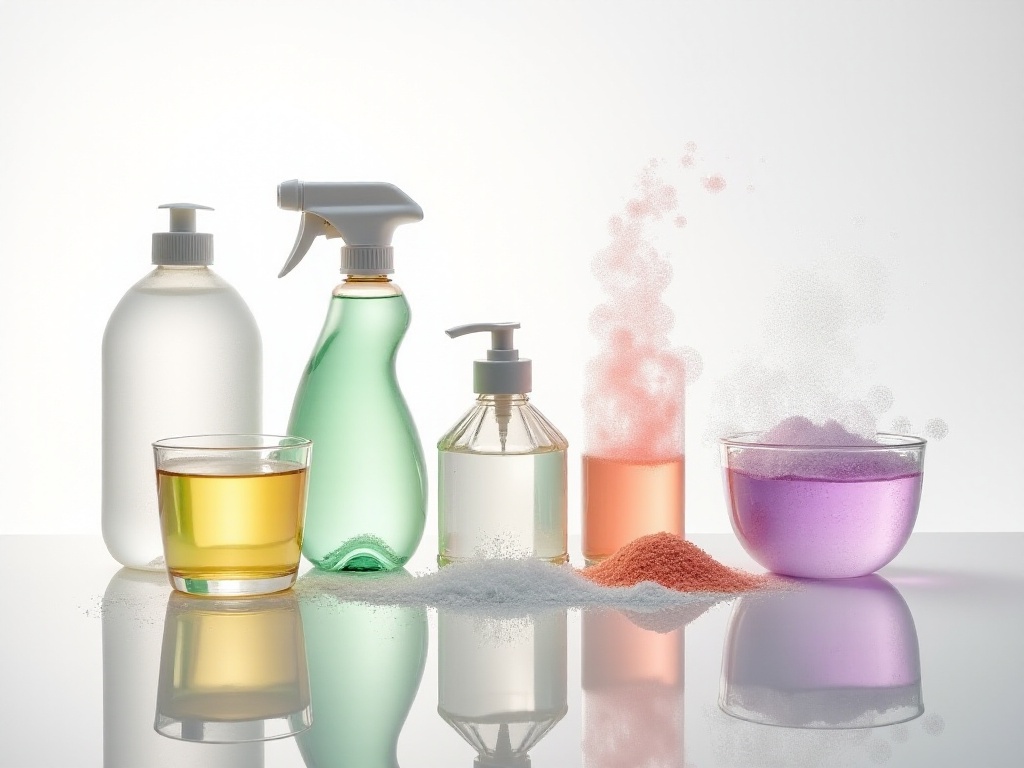
Closing Thoughts
Through these days of organizing and practicing, I've really felt how much change a clean and tidy home can bring to life. Cleaning work does require some techniques, but once you master these methods, managing housework becomes much easier. See, aren't these methods all particularly practical? And most cleaning supplies are already available in our homes - there's no need to spend extra money on professional cleaners.
Most importantly, establish your own cleaning habits. For example, spend 10 minutes tidying up before bed each day, and schedule a thorough cleaning every weekend. After slowly developing habits, you'll find maintaining home cleanliness isn't actually difficult.
Keeping your home clean isn't just for visual pleasure, but more importantly to create a healthy and comfortable living environment. A clean home can make us feel good both physically and mentally, and improve our work and life efficiency.
Warm Reminder
Remember a basic principle of cleaning: clean from top to bottom. For example, first wipe cabinet tops, then clean table surfaces, and finally the floor. This avoids repeated work and doubles efficiency. Also pay attention to safety while cleaning - it's best to wear gloves when using cleaning agents to protect your skin.
Most importantly, develop regular cleaning habits, so there won't be many stubborn stains to deal with. After all, prevention is better than cure applies to home cleaning too. Spending a little time doing simple cleaning maintenance each day is much easier than waiting until the house gets very dirty to do a major clean.
Finally, I hope these cleaning tips can help everyone keep their homes spotlessly clean. A clean home is a warm home. Let's work together to create a comfortable and pleasant living environment!





